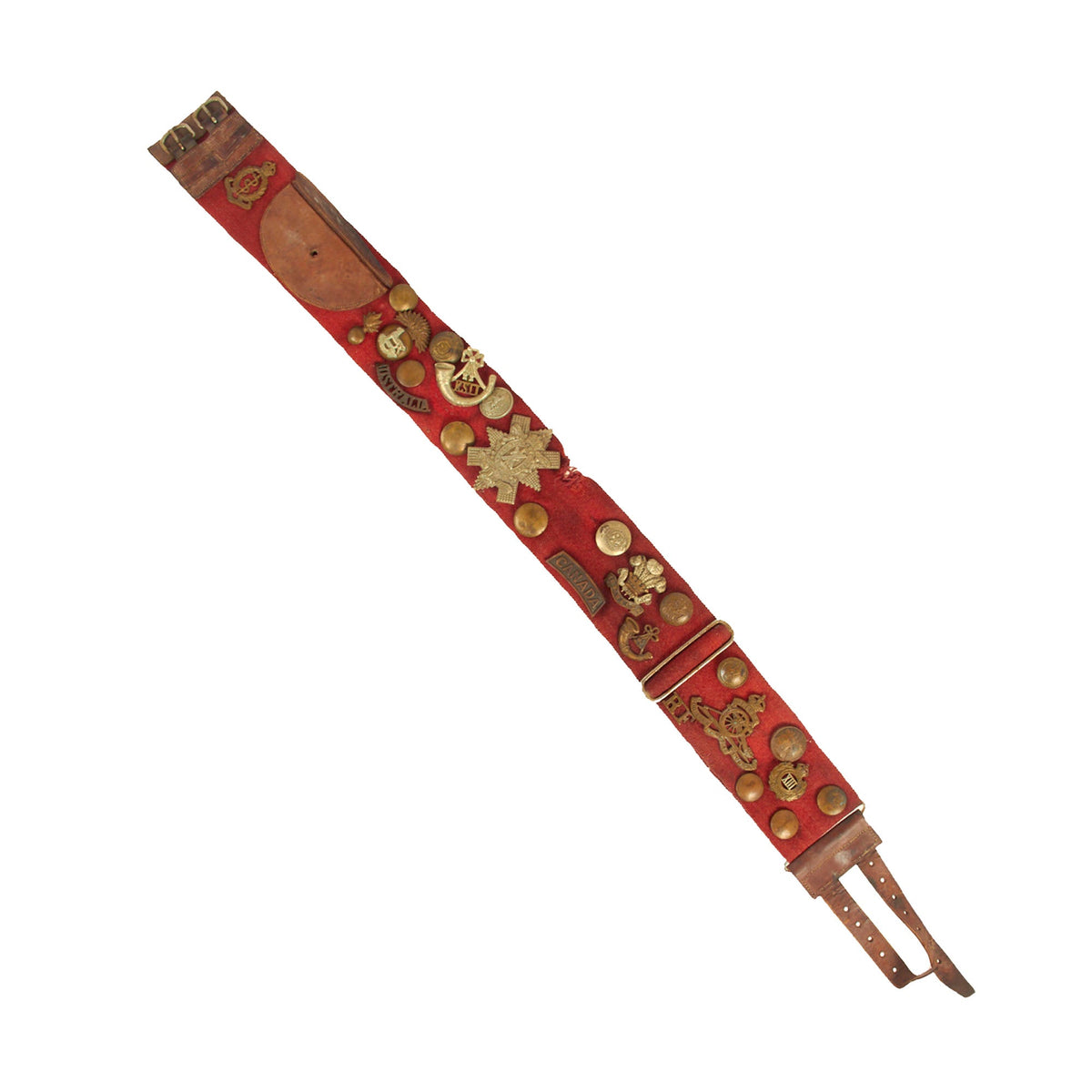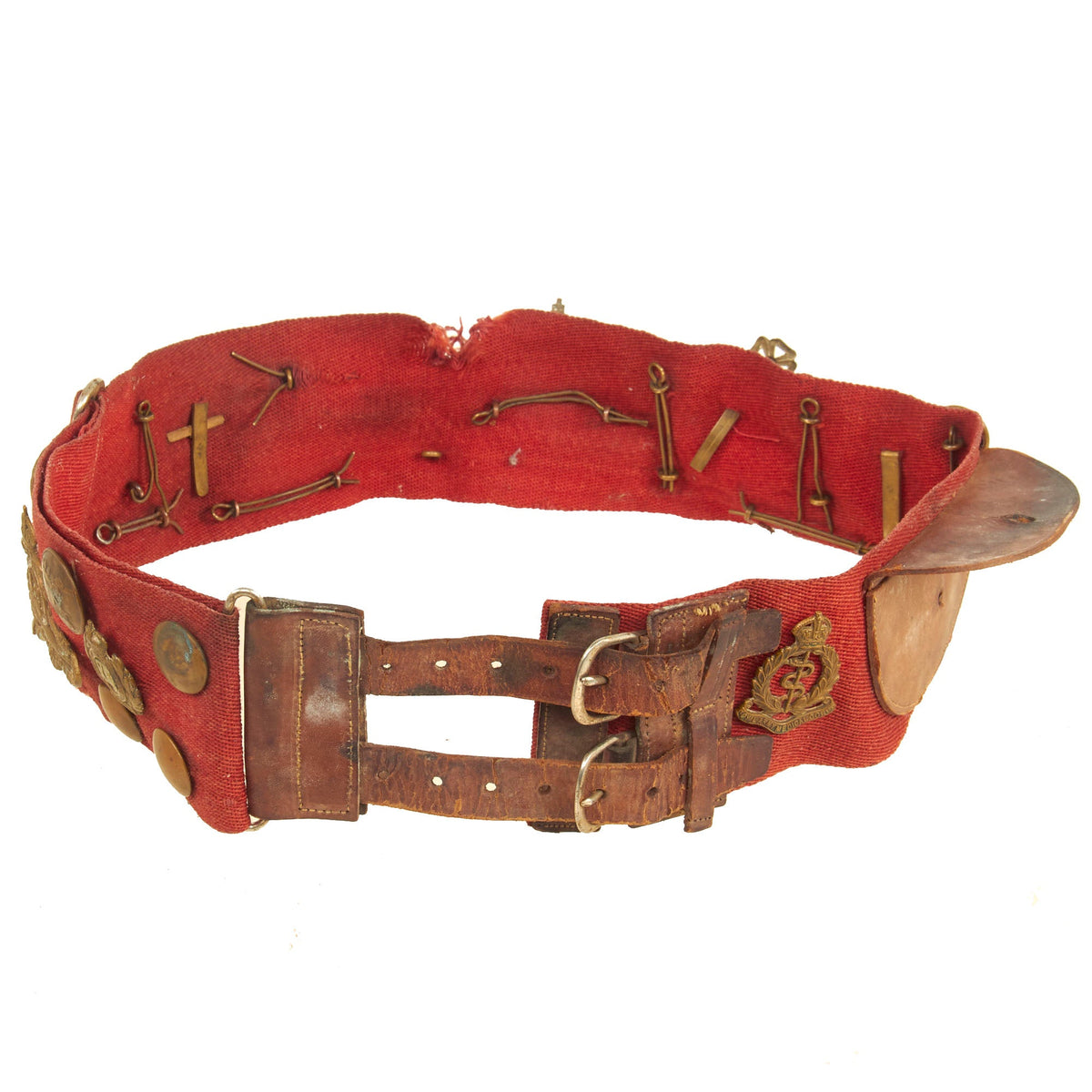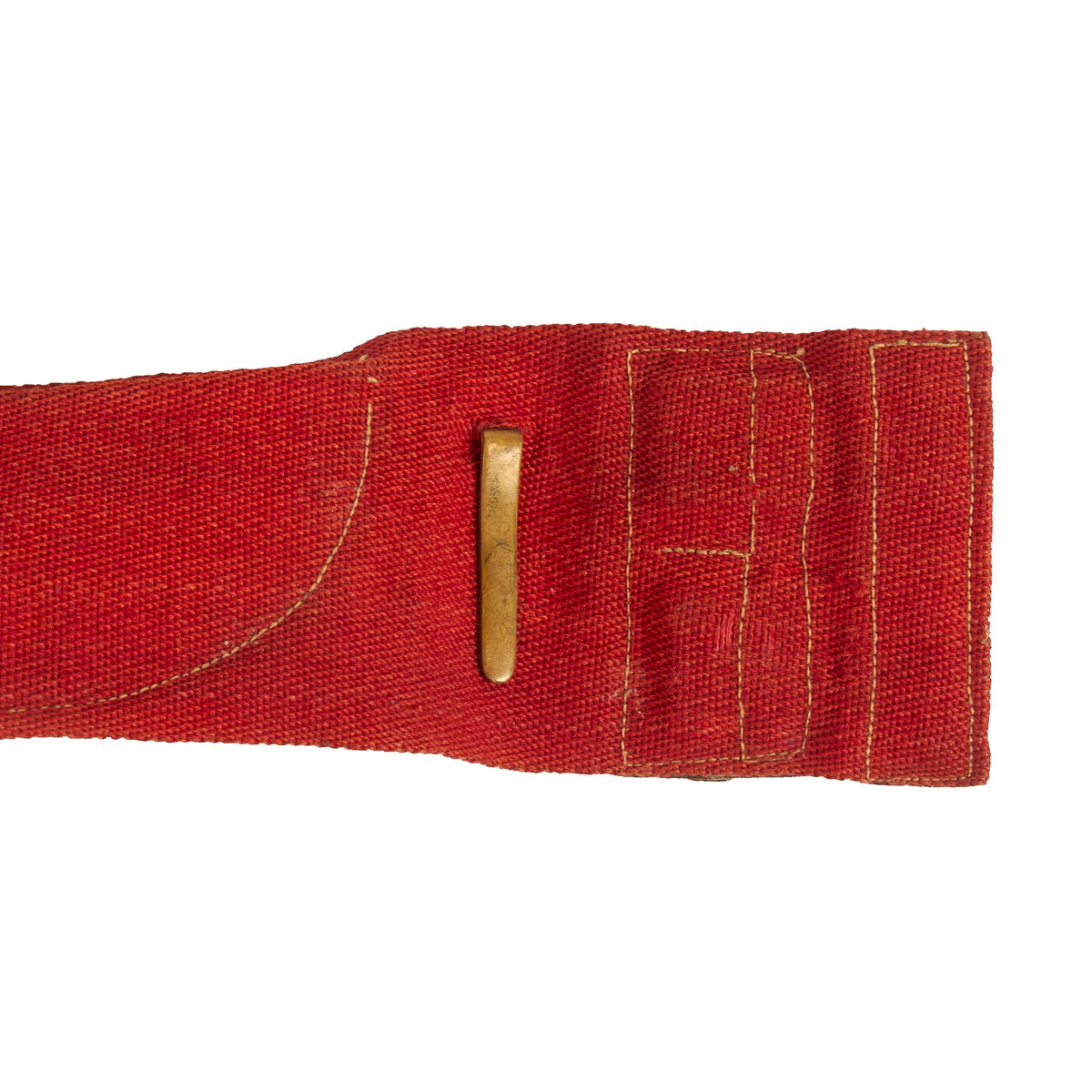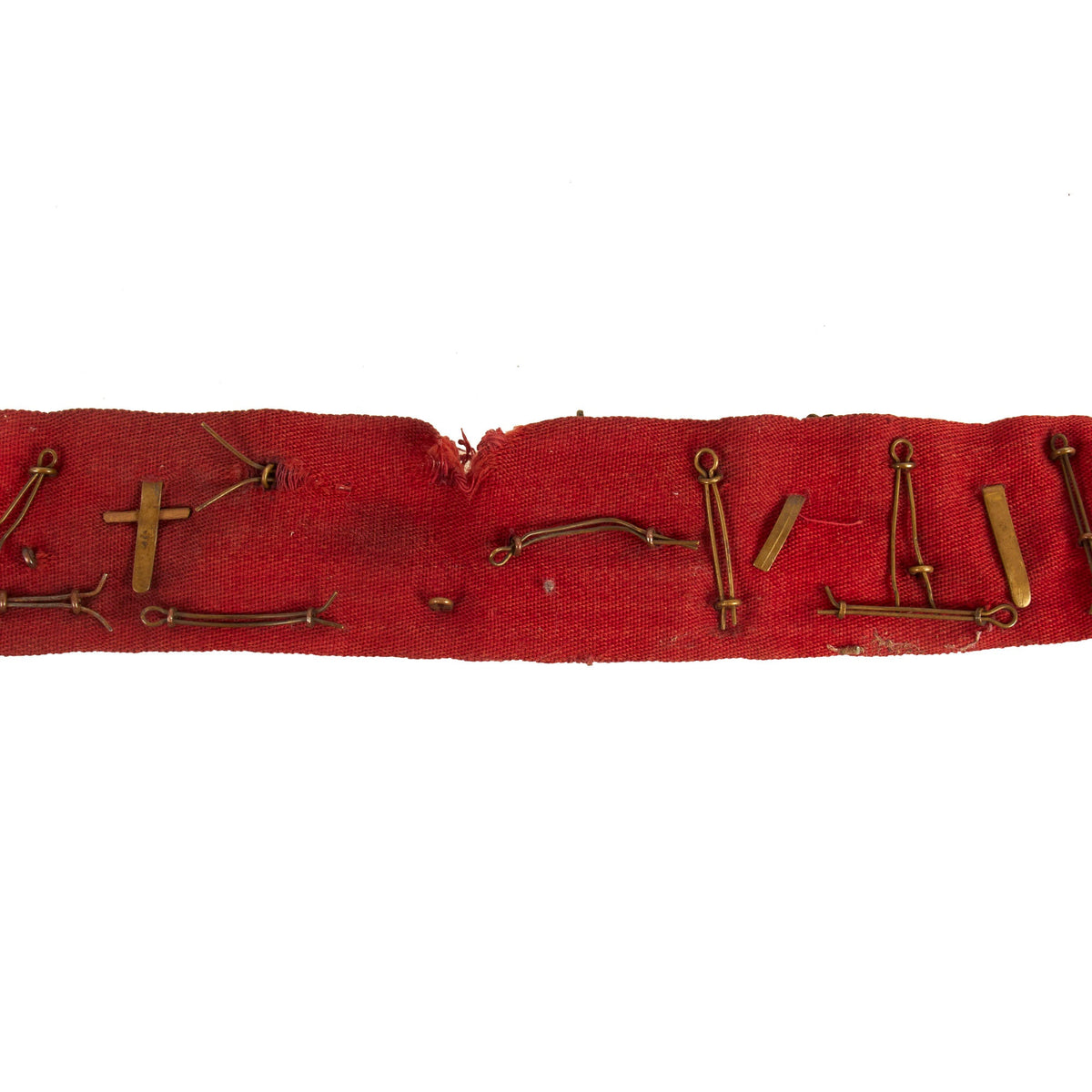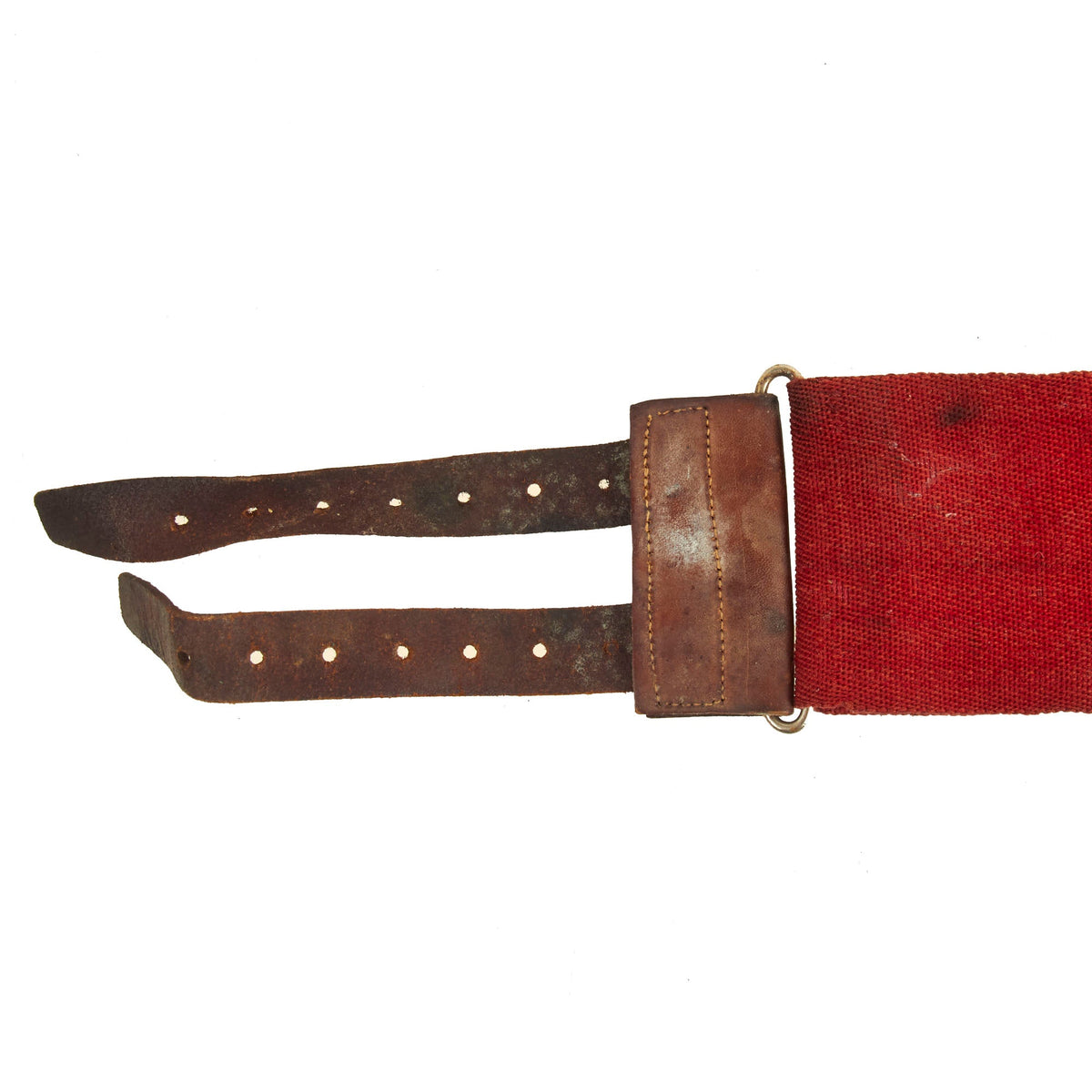Original British WWI Hate Belt Mounted on Stable Belt with 23 Attached Items Original Items
$ 395,00 $ 118,50
Original Item: One-of-a-kind. American soldiers were known for their love of souvenirs in the Great War; So, a lot of material history of the war came across the Atlantic with returning soldiers. Among collectors of military memorabilia from World War One “HATE BELTS” are items of interest.
German soldiers’ leather belts, and other belts from participating armies, that were festooned with buttons from soldiers’ uniforms are called Hate Belts / Souvenir Belts / Grave Digger Belts. These made for excellent collector’s pieces.
“Hate Belt”: the idea was that if a German soldier had killed or captured an Allied soldier, then he would have the button from the newly deceased or captured soldier attached to his belt as a kind of notch of conquest on his belt. This, no doubt, is the most intriguing explanation for those decorative belts.
“Souvenir Belt”: this description is apt for many of the belts that are in circulation today. The souvenir belt would involve a German infantryman’s belt being decorated with buttons and tabs from troops BOTH Allied and CENTRAL Powers and kept as a remembrance of The War.
“Grave Digger Belt” description is self explanatory, to a degree. Troops burying dead soldiers would sometimes remove buttons from those they buried as a remembrance. It is impossible to determine the origin of most belts, but some of these highly collectible belts provide some hints as to their origin. Nevertheless, these belts provide for excellent points of interest for collectors.
Normally a hate belt would be a leather belt, usually German, but it was not uncommon to use other items instead. In this case it is a red British stable belt. A stable belt is a wide webbing belt, usually a single solid color or horizontally striped in two or more different colors. It is worn around the waist and when worn with PCS it is worn through the trouser belt loops. In the British Army and Royal Marines, when worn with barrack dress, the belt is placed either through the belt loops of trousers or a skirt, or over a jersey. In the Royal Air Force (RAF), it is worn with service working dress (No. 2 dress) either covering the top of the trousers (or skirt) and the lower part of the shirt, or through the belt loops if they can accommodate the belt’s width. Unlike the Army’s, the RAF belt is never worn over a jersey. The original cavalry stable belts buckled at the side to avoid chafing the soldier’s stomach as he bent down during stable work, and to avoid marking or catching on the horse’s harness, but many stable belts are now clipped at the front, sometimes behind a metal belt plate (usually bearing the badge of the regiment), although a few regiments such as the Light Infantry clip their stable belts at the front with the original two leather straps. Many units, however, continue to use the traditional method of securing the belt using two leather straps and metal buckles at the left-hand side.
It features an impressive 23 items in total, most of which are buttons from various British territories, countries, states, and so forth. The items are attached by their own attachment studs, or held in place by string or wire. All items appear to be present on the belt and there are no spaces or evidence of more attachments.
It measures about 29 inches in overall length and is 2 3/4 inches wide. The belt still has intact leather tabs and buckles.
An extremely impressive item! Ready to display!
Fast Shipping with Professional Packaging
Thanks to our longstanding association with UPS FedEx DHL, and other major international carriers, we are able to provide a range of shipping options. Our warehouse staff is expertly trained and will wrap your products according to our exact and precise specifications. Prior to shipping, your goods will be thoroughly examined and securely secured. We ship to thousands clients each day across multiple countries. This shows how we're dedicated to be the largest retailer on the internet. Warehouses and distribution centres can be located throughout Europe as well as the USA.
Note: Orders with more than one item will be assigned a processing date depending on the item.
Before shipping before shipping, we'll conduct a thorough inspection of the items you have ordered. Today, the majority of orders will be delivered within 48 hours. The delivery time will be between 3-7 days.
Returns
The stock is dynamic and we cannot completely manage it because multiple stakeholders are involved, including our factory and warehouse. So the actual stock may alter at any time. It's possible that you may not receive your order once the order has been made.
Our policy is valid for a period of 30 days. If you don't receive the product within 30 days, we are not able to issue a refund or an exchange.
You can only return an item if it is unused and in the same state as the day you received it. You must have the item in its original packaging.
Related products
Uncategorized
Uncategorized
Uncategorized
Uncategorized
Uncategorized
Uncategorized
Australian WWII Owen MK1 Machine Carbine SMG Custom Fabricated Replica with Sling Original Items
Uncategorized
Angolan Rebel 1970s era 60mm Inert Display Mortar from Angolan Civil War Original Items
Uncategorized
Uncategorized
Uncategorized
Armoured Fighting Vehicles of the World: AFVs of World War One (Hardcover Book) New Made Items
Uncategorized
Band of Brothers ORIGINAL GERMAN WWII Le. F.H. 18 10.5cm ARTILLERY PIECE Original Items
Uncategorized
Uncategorized
Armored Burgonet Helmet & Polearm from Scottish Castle Leith Hall Circa 1700 Original Items
Uncategorized
Uncategorized
Uncategorized
Uncategorized
Uncategorized
Uncategorized
